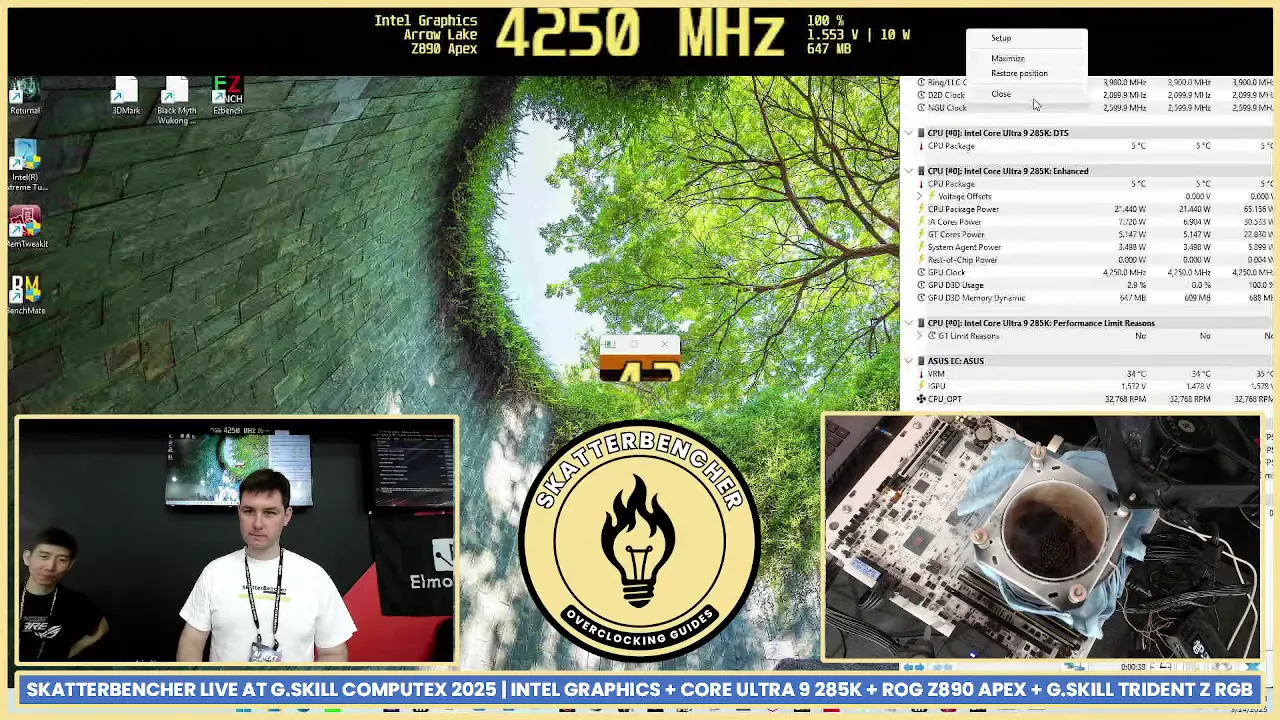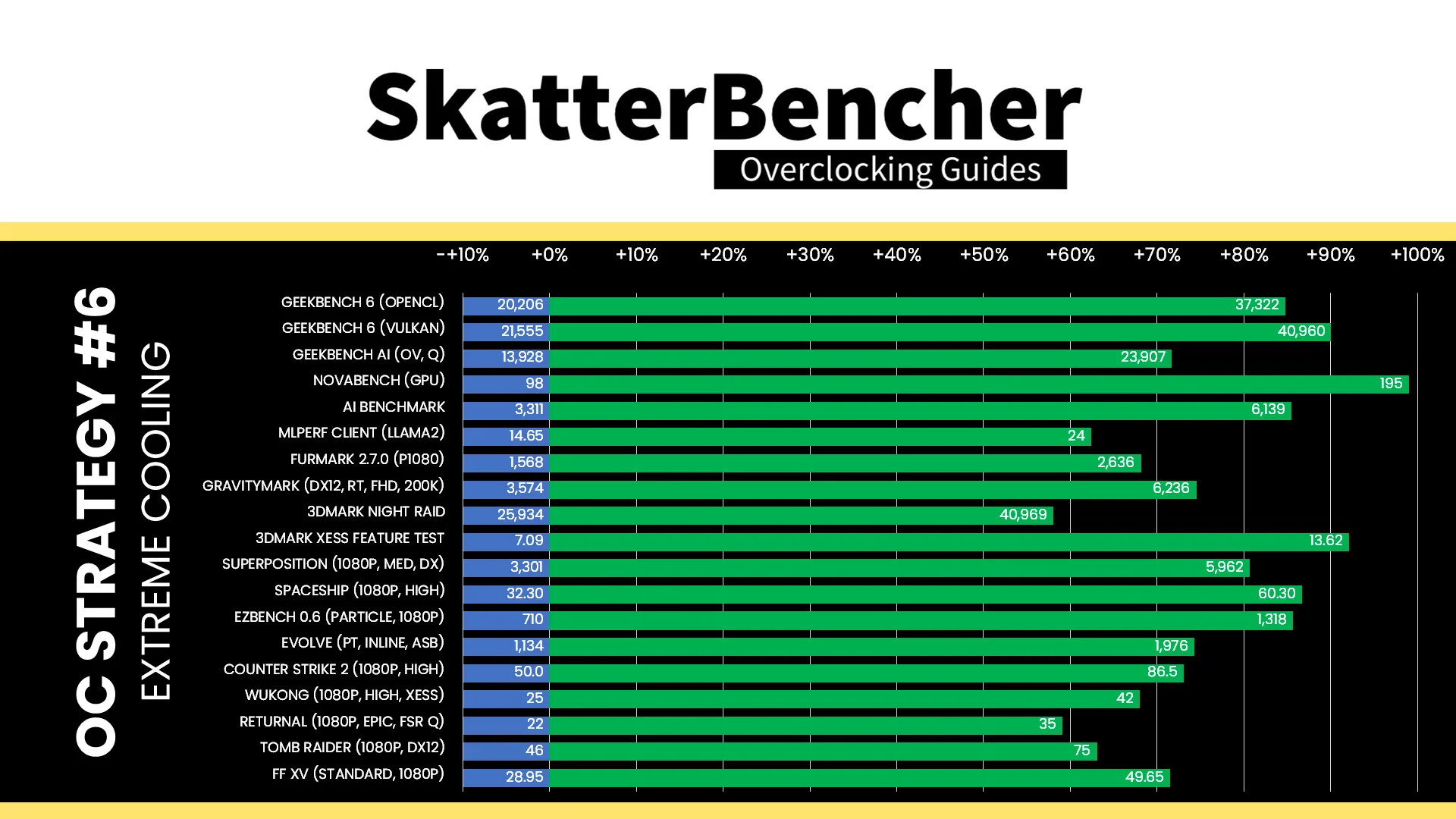
At Computex, extreme overclocker SkatterBencher pulled off a shocking feat, shattering the GPU frequency world record, not with a discrete powerhouse like the RTX 5090, or even the RX 9070 XT for that matter, but with an integrated GPU from Intel. That's right! The overclocker pushed the built-in graphics on his Core Ultra 9 285K to an astonishing 4.25 GHz, with the voltage maintained at 1.7V and a freezing temperature of -170 degrees Celsius.
The GPU overclocking database maintained by SkatterBencher is dominated by discrete GPUs like the RTX 4090 and RX 6900 XT, and that's exactly what you would expect. Splave has previously uncovered that Arrow Lake boasts substantial overclocking potential and headroom, even though performance in general tasks is considered middling. In the run-up to these record attempts, SkatterBencher achieved a respectable 3.1 GHz at 1.3V; however, the primary instinct for any enthusiast overclocker is "How fast can I push this thing?" and that's precisely what he did.
The clock for the built-in graphics on Arrow Lake is based on half the SoC reference clock, which defaults to 100 MHz. This value is then multiplied by the GT ratio, typically at 40x, resulting in an operating frequency of 2 GHz, or a theoretical maximum of 4.25 GHz at 85x. SkatterBencher discovered that Arrow Lake scales better with temperature as opposed to voltage, where at 1.3V, the GPU clocks at 3.1 GHz (30 degrees Celsius), increasing to 3.6 GHz at -150 degrees Celsius.
The roadmap was set; the overclocker aimed for 1.6- 1.7V alongside a frigid -170 degrees Celsius to breach the 4 GHz barrier. Throwing LN2 at the chip isn't all that simple, however, as Splave previously discovered, the system seldom doesn't boot up if the SoC Tile hits -100 degrees Celsius or lower. Even so, with the help of Asus's in-house overclocker Shamino and the Asus ROG Z890 Apex motherboard, SkatterBencher achieved a record-breaking frequency of 4.25 GHz, as reported in GPU-Z.
The next goal was to gauge performance across a suite of benchmarks and games. For a more consistent and stable experience, the GPU was overclocked to 3.9 GHz at 1.6V and -160 degrees Celsius, coupled with DDR5-8600 RAM. Overclocking the Intel GPU yielded substantial performance improvements. In Novabench, it delivered double the stock performance. Gaming benchmarks showed a jump from 50 FPS to 86 FPS in Counter-Strike 2, and a boost from 25 FPS to 42 FPS in Black Myth: Wukong.


Beyond 4 GHz, the performance gains were negligible, likely due to Intel's die-to-die interconnects. Increasing the reference clock from 100 MHz to 110 MHz offered some improvements, but they were not substantial. Still, this is a spectacular exhibition of what an integrated GPU can achieve. However, this is not practical in any case for the average consumer, since you'd need a continuous supply of LN2, and voltages beyond 1.5V can exponentially diminish a processor's lifespan.
Follow Tom's Hardware on Google News to get our up-to-date news, analysis, and reviews in your feeds. Make sure to click the Follow button.







